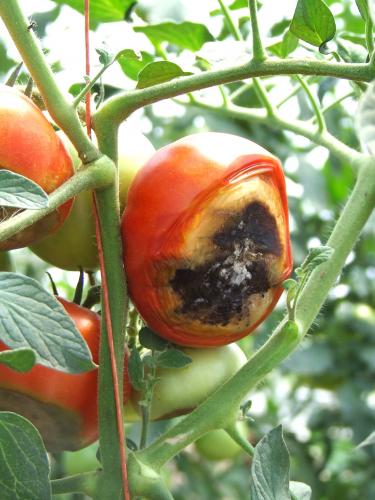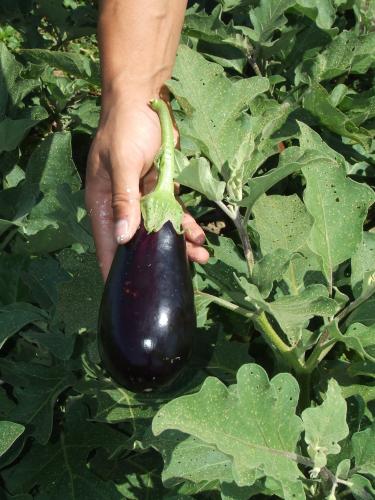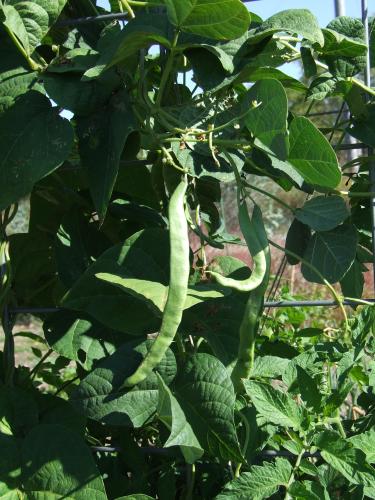Warm season vegetables to grow during summer
There are many warm season vegetables you can grow now that do best when weather and soils are warm.

In the great, big world of vegetable gardening, there are approximately 50 kinds of delectable, edible plants commonly grown. They can be divided into two broad categories: cool season vegetables and warm season vegetables. Cool season vegetables grow best in spring and fall when temperatures are mild, and most can withstand light frosts. Warm season vegetables do best when weather and soils are warm, and can really handle hot weather. When either type are asked to grow well and perform at the wrong part of the season, they fail to please.
Growing conditions for warm season vegetables
Warm season vegetables need eight or more hours of uninterrupted sun to produce a good crop. It requires a great deal of sunlight energy to produce fruit. Increased hours of direct sun results in more flavorful vegetables.
Soil temperatures should have warmed adequately for seeds to germinate and transplants to grow well. Garden soil temperatures need to be between 60 and 85 degrees Fahrenheit, but warm season crops do best if soil temperatures are above 70 F. You can buy a soil thermometer at a nursery or garden center. For accuracy, check the soil temperature early in the morning before the temporary heat of the day has raised it.
Most garden vegetables require a soil pH of around 6.5 and organic matter content of 5 percent or more. To find out if nutrients are acceptable for growing vegetables, consider getting a soil test. Purchase a Michigan State University Extension Soil Test Mailer at MSUSoilTest.com to check nutrients, soil pH and organic matter content soil type and receive a recommendation to improve the soil. As a rule, vegetable plants need 1 inch of water per week to maintain even moisture throughout the soil profile during the growing season. However, weather patterns alter evaporation and water usage by the plants. Keeping a rain gage handy to measure natural rainfall and irrigation coupled with inserting a trowel or soil probe to investigate soil moisture is always helpful.
Seeds or transplants?
Many popular warm season vegetables such as beans, corn, squash, cucumbers, pumpkins and okra can be directly seeded into the garden at the end of May or possibly the beginning of June in more northern Michigan counties. They require warm soil to germinate and grow. If the soil is too cold, seeds can rot before they germinate.
With transplants, these small plants have usually been started indoors about eight weeks before they are going into the garden. This extends their production time in the garden because they are older. When buying transplants, choose those without flowers or fruit. Plants in starter trays that have set flowers or fruit will not be as productive as those without. Plants such as tomatoes grown in large containers that have set some fruits are less likely to be affected by this stress. Picking off flowers or fruit will not reverse the plant to green growth.
Examples of warm season vegetables
Tomatoes are one of the most popular garden vegetables, but they are technically grouped as fruit. For best production, plants need to be caged or staked to prevent damage to the fruit. Tomatoes grow best with warm soil, so not using mulch or covering the soil early in the season with clear or black plastic can warm the soil more rapidly. Adequate and consistent water is required to keep tomatoes from developing a physiological problem called blossom end rot, where the top is red and rounded but the bottom is flat, black or brown and leathery. This could happen because of a lack of water or infrequent watering, or the tomato is growing in too small of a container, so roots cannot spread out enough to get moisture.

Tomatoes can exhibit blackened, leathery bottoms when summer-time soil moisture fluctuates and fruit is developing.
There are many pepper varieties available from mild to wild. A relative of the tomato, their growing requirements are very similar. It is possible to grow hot and sweet peppers next to each other in the garden and the fruit will not pick up the flavor or hotness of its neighbor. However, if seeds are saved, they will be a mix-and-match of pepper neighbors.
The original eggplant fruit was white. This is how the name was chosen. Now there are many kinds from purple to striped exteriors. Pick eggplant fruits when small. If you go for the giant ones, often the interior is soft and mealy. Like their pepper and tomato cousins, eggplants appreciate full sun and adequate water to make fruit.
Harvesting eggplants when small will ensure firm texture throughout.
Tomatillos are closely related to tomatoes, eggplants and peppers but, it is important to have two or more tomatillo plants for cross pollination. Sometimes referred to as a husk tomato, the bright green fruit inside of the papery husks are used in salsas. They are grown with the same conditions as tomatoes.
Cucumbers are best directly seeded into the garden. If the soil is warm, seeds can be up in about a week. Cucumbers produce best when trained onto a fence or trellis. Fruit will not be damaged by being in contact with the soil and is less accessible to critters like slugs. Keep them watered because cucumbers that do not have enough water can be misshapen and bitter.
Summer squash and winter squash are vining plants that can take up large areas of the garden. However, it is possible to grow bush zucchini and bush yellow summer squash in a much smaller area. Summer squash are harvested when the skin is tender and soft, and is cooked with the skin on. If your thumbnail can easily pierce the skin, it is tender. Winter squash are left in the garden as long as possible but picked before the first frost. Their skin needs to be hard so it can survive winter storage.
Pumpkins need a great deal of room to grow because of the long vines. If growing giant pumpkins, put them in as transplants so they have a longer season to produce those giant, orange orbs. Other kinds of pumpkins can be directly seeded. Pumpkins with skin that doesn’t harden well store poorly.

Pumpkins come in many different shapes and sizes.
Watermelon and muskmelon should be purchased as transplants. Michigan does not have a long enough growing season to grow big watermelons but the small, round, dark green melons will grow well. The advantage of these round beauties is they do not take up as much refrigerator room and have a sweet taste and firm flesh. Watermelons and muskmelons require a great deal of water when growing and producing fruit. To tell if your melon is ready to pick, look at the bottom of the melon for a light yellow or whitish area. Then, use the pad of your finger or thumb to gently press on the stem where it joins the melon. It should separate easily. Thumping on melons only bruises them.
Fresh beans and dried beans can be grown in gardens. Green and yellow or wax beans are grown as bush plants. Pole beans grow as vines and need to be trained on a trellis or fence. Flat beans like Fava beans or lima beans are picked when fresh. To extend harvest, plant a portion of the seeds at two-week intervals. Beans for drying like kidney or great northern are harvested when the pods dry out.
Pole beans and flat beans can easily be grown in the garden and direct-seeded at two-week intervals for longer harvest period.
Sweet corn is mainly pollinated by wind. It is important to grow corn in a block of at least four rows. Sometimes the super sweet varieties do not germinate as well as they should. Plant them closer than the label recommends. As soon as tiny leaves are out of the ground, carefully transplant those that are too close to places where there are gaps in the rows. Sweet corn is the only vegetable where you are eating the seeds. Because of cross-pollination issues, do not plant sweet corn near field, Indian or popcorn because it can negatively affect the taste of the sweet corn.



 Print
Print Email
Email

